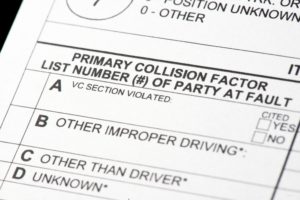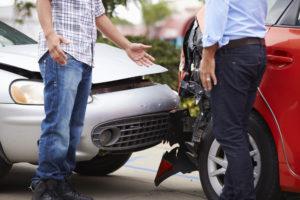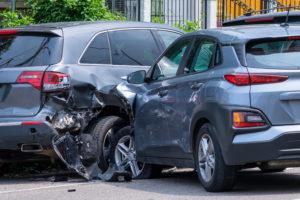
Ever wondered how to determine fault in a car accident? It is important to understand car auto accident fault determination rules in right-of-way driving accidents and what effect they have on insurance settlements for your personal injuries and property damage.
Fault is determined in alignment with traffic laws – and the driver who had the right-of-way is more likely to be not at fault (or at least not 100% at fault) in an accident.
Drivers: Do You Know the Laws for Right of Way? Who Has the Right of Way at an Intersection?
Intersections are one of the most common places for accidents to occur because drivers are often unclear on right-of-way rules and who should yield the right-of-way to whom, which can result in a failure to yield right-of-way accident. However, there are definitive rules about who gets to go, and knowing them could save your life the next time you come to a crossroads.
Always obey these rules for right of way:
- Controlled intersections: At a right-of-way intersection with traffic lights or stop or yield signs, obey the signals and signs! This is the easiest way to determine who has the right-of-way at a stop sign or traffic light and to yield right-of-way properly and to stay out of trouble.
- Intersections not controlled by a stop sign or yield signs rules or traffic lights: Yield to cars already at the intersection. If you and another car arrive at the intersection at the same time, then yield to the car to your right like you would at a four-way stop sign right-of-way.
- Intersections with multiple-lane roads: When a one- or two-lane road intersects with a larger road, four-way intersection rules apply and the driver on the smaller road must yield to cars on the multi-lane road.
- T-intersection right-of-way: When a road dead-ends into a through street, the driver on the dead-end road must yield to traffic on the through street.
- Highway exit ramps: When an access road intersects with a highway exit ramp, drivers on the ramp must yield to cars on the access road. Likewise, if a car is entering a controlled-access highway, the car on the on-ramp must yield to any vehicle on the highway.
- Drive at or below the speed limit! In any right-of-way situation, if you are driving at an unlawful speed, you forfeit your right-of-way.
For a free legal consultation, call 800-537-8185
When Traffic Lights Go Out
When a street light at a controlled intersection is either blinking or not functioning, you are required to approach with caution and yield the right-of-way to any vehicle that has reached the intersection first (i.e. before you), and then yield to vehicles to your right, similar to how you would handle a stop sign right-of-way. Always drive as if you are the one to yield the right-of-way until you know your position, and never assume that others will yield when they should.
How Fault in Car Accidents Affects Insurance Claims
Car insurance in most states is fault-based. If a right-of-way accident happens in a fault or tort state, the at-fault driver’s insurance company typically helps pay for automobile repairs, medical bills, and other losses like pain and suffering, loss of consortium, and lost wages. If the other driver is completely at fault, typically they, and their insurance company, will be responsible for all damages.
Click to contact our personal injury lawyers today
Partially at Fault: It’s a Thing
However, some states, such as Louisiana, use a strict form of comparative negligence. This means that more than one driver can be at fault for the same accident. For example, if two drivers attempt to merge into the middle lane at the same time, each not seeing the other and colliding and causing a failure to yield right-of-way accident, both drivers might be at fault.
If each driver is found to be 50 percent at fault, then each driver is responsible for 50 percent of the settlement. This is why proving who is at fault in a car accident changing lanes or at a right-of-way intersection is so important.
So, even if you are deemed partially at fault, you can seek compensation in proportion with your degree of fault. If a speeding driver rear-ends you after you suddenly changed lanes, it may be determined that both of you bear a degree of fault. If the other driver is found to be 60 percent responsible and you’re held 40 percent responsible, you may seek up to 60 percent of the settlement from the other driver’s insurer.
How Are Accident Faults Determined?
To determine fault in a right-of-way accident, your car accident attorney will rely on evidence from the scene and eyewitness accounts. They may also be able to review camera footage of the accident, if any exists. This is why it’s important to document every bit of evidence you can at the scene of a crash.
Get a Police Report. It’s Important
The police report plays a key role in the insurance company’s determination of fault.
The official police account of what transpired is considered more reliable than accounts from those involved (which may conflict with one another or reflect personal biases). Insurance companies use the police report to understand how the right-of-way accident occurred and get a clear idea of who caused the accident, especially in situations where liability is not always clear.
Essentially, the police report will break the “my word against yours” tie. Your car accident lawyer will use the police report to prove the facts of your case and get you the maximum compensation. Without the report to help prove liability, your settlement amount could be reduced.
Questions?Call 800-537-8185
to find a Morris Bart office near you.




